
How To Fit Skirting Boards 2025 | DIY | MDF & Wood | Video Tutorial
Posted by Lee Watkinson on 2nd Jan 2025
Skirting boards, also known as baseboards in the US, are an essential interior element, vital for your walls. They not only cover the joint between the wall and the floor but also add a finishing touch to your room. This comprehensive guide will walk you through the process of fitting skirting boards, from preparation to the final touches, ensuring a professional showroom-worthy finish for your DIY project.
Tools and Materials You'll Need
- • Skirting boards (we recommend moisture-resistant MDF for its durability and high finish quality, though softwood may require a wood preservative coating if used)
- • Mitre saw or mitre box
- • Coping saw
- • Hammer and nail punch
- • Drill and screws (Use appropriate screws for masonry walls with wall plugs, or oval wire nails for stud walls)
- • Adhesive (e.g., Demsun, CT1 – Ideal for damp-proofed walls to avoid penetrating the barrier)
- • Wood filler and sanding sponge
- • Measuring tape and pencil
- • Spirit level
- • Pipe and cable detector
- • Safety goggles and gloves
- • Dust mask
Step-by-Step Guide
Step 1: Preparation −
Before you begin, ensure you have all the necessary tools and materials. Measure your room accurately and purchase slightly more skirting board than you need to account for mistakes or miscalculations.
Remove any existing skirting boards and prepare the walls by filling any holes or cracks. Use a pipe and cable detector to locate any hidden wires or pipes in the walls where you'll be attaching the skirting boards.
It’s recommended to start on the longest wall with internal corners, as this will provide a better foundation for fitting the skirting around the room. Reuse existing fixing points wherever possible to reduce wall damage.
Pro Tip: Allow new flooring to acclimatise for at least 48 hours before fitting skirting boards to prevent gaps from appearing later due to expansion or contraction.
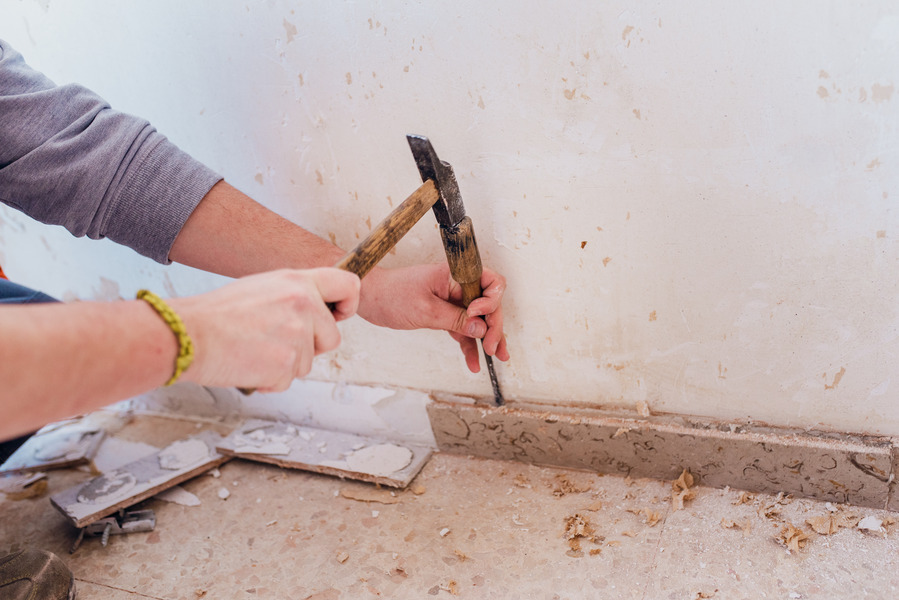
Step 2: Measuring and Marking −
Measure the length of each wall where you'll be fitting skirting boards. Mark the measurements on your skirting boards, ensuring you account for corners and joints. Make sure to protect the face of the skirting by placing a piece of wood between the face and the mitre tool when cutting.
For internal corners, you'll need to create a scribed joint. For external corners, you'll use a mitre joint. Mark these on your boards accordingly.
Remember: Measure twice, cut once. Double-check all measurements before making any cuts.
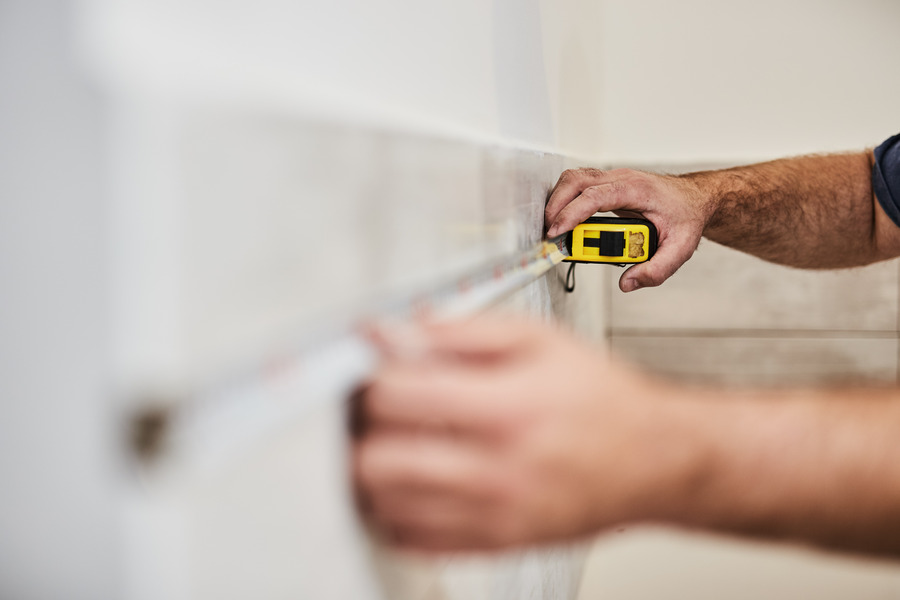
Step 3: Cutting Techniques −
Mitre Joints for External Corners
For external corners, cut two pieces of skirting board at a 45-degree angle so they fit together perfectly. Use a mitre saw or mitre box to make these cuts:
- Set your mitre saw to 45 degrees (for other angles use our Mitre Angle Calculator).
- Place the skirting board face-up against the fence of the saw.
- Make the cut, ensuring the saw blade comes down smoothly.
- Repeat for the adjoining piece, but in the opposite direction.
It is recommended to secure the mitre tool in a vice or workbench for accuracy. Use a piece of wood between the mitre tool and the face of the skirting to protect its surface.
Scribed Joints for Internal Corners
For internal corners, one piece will be cut straight, while the other will be scribed to fit the profile of the first piece:
- Cut the first piece square, butting it into the corner.
- For the adjoining piece, cut a 45-degree mitre on the end.
- Use a coping saw to cut along the profile of the mitre, following the contour of the skirting board.
- Sand the cut edge for a smooth finish.
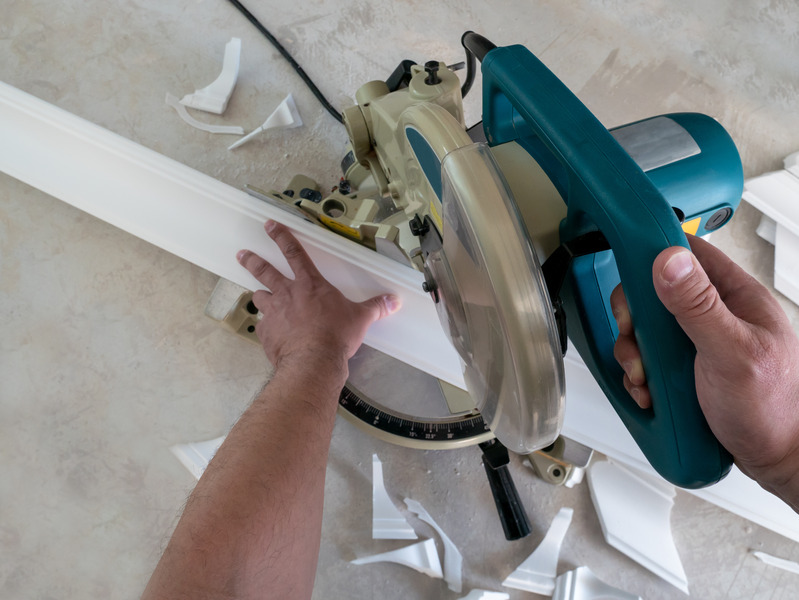
Step 4: Fitting the Skirting Boards −
There are three main methods for attaching skirting boards:
1. Nailing
Nailing is a traditional method that works well for solid walls:
- • Use lost-head nails and hammer them in at a slight angle.
- • Space nails about 600mm apart.
- • Ensure that there are no pipes or cables behind the skirting before drilling or nailing.
- • Use a nail punch to countersink the nails slightly below the surface.
2. Screwing
Screwing is ideal for plasterboard walls or when you want a very secure fit:
- • Pre-drill holes in the skirting board to prevent splitting.
- • Use wall plugs if screwing into masonry.
- • Countersink the screws slightly.
3. Adhesive
Using adhesive is a good option for uneven walls or when you want to avoid visible fixings:
- • Apply a zigzag pattern of adhesive to the back of the skirting board.
- • Press the board firmly against the wall.
- • Use temporary supports or weighty items to hold the board in place while the adhesive sets.
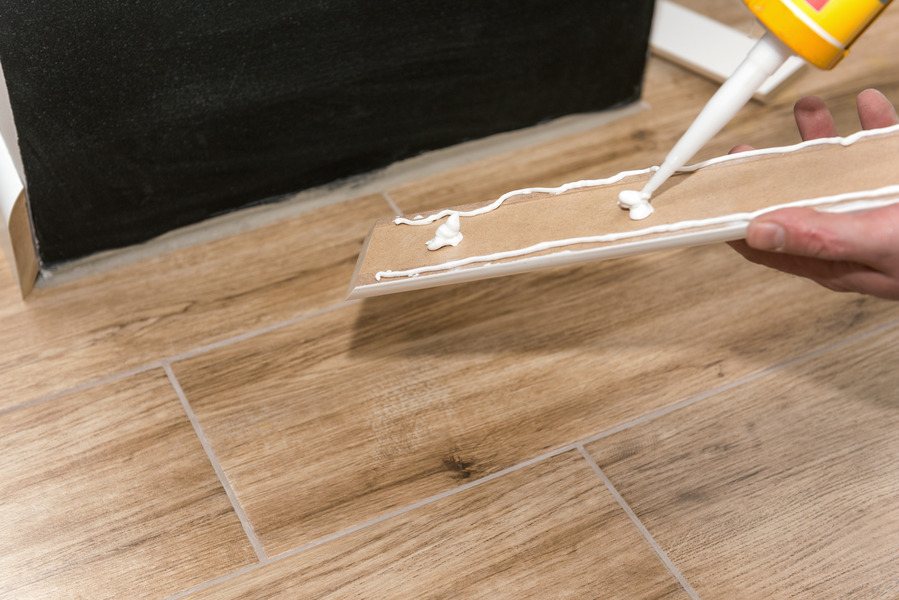
Step 5: Dealing with Obstacles −
You may encounter obstacles such as radiator pipes or electrical sockets. Here's how to handle them:
Radiator Pipes
- • Measure the position and diameter of the pipe.
- • Mark this on your skirting board.
- • Use a drill to make a hole slightly larger than the pipe (You can purchase skirting board with a rebate to save time and effort).
- • Cut from the back of the board to the hole to allow the board to slot around the pipe.
Electrical Sockets
- • Measure the position and size of the socket.
- • Mark and cut out the required section from your skirting board.
- • Use a jigsaw or coping saw for precision cutting.
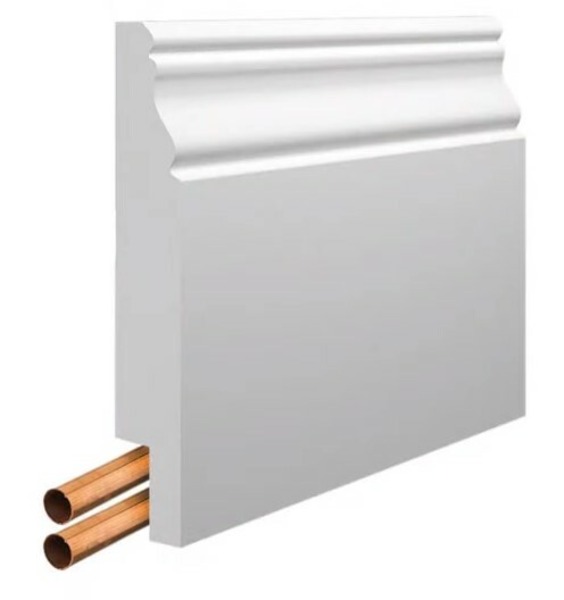
Step 6: Finishing Touches −
Filling and Sanding
- • Use wood filler to cover any nail holes or gaps in joints.
- • Once dry, sand the filled areas until smooth.
- • Use fine-grit sandpaper for a professional finish.
Caulking
- • Apply decorator's caulk along the top edge of the skirting board where it meets the wall.
- • Smooth the caulk with a wet finger or caulking tool for a neat finish.
Painting
- • If your skirting boards aren't pre-painted, now's the time to paint them.
- • Use masking tape to protect the wall and floor.
- • Apply a primer if needed, followed by your chosen paint.
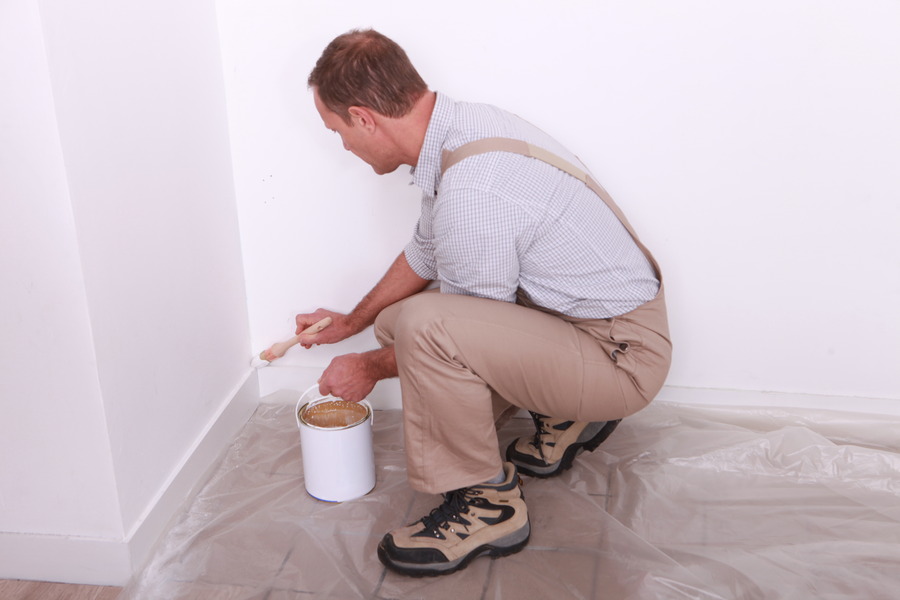
Troubleshooting Common Issues
Uneven Walls ▼
If your walls are uneven, you may notice gaps between the skirting board and the wall. To address this:
- • Use a flexible filler or caulk to fill larger gaps.
- • For very uneven walls, consider scribing the back edge of the skirting board to fit the contour of the wall.
Gaps in Corners ▼
If you notice gaps in your mitre joints or scribed corners:
- • Use wood filler to fill small gaps.
- • For larger gaps, you may need to recut the joint for a tighter fit.
Splitting Wood ▼
If your skirting board splits when nailing:
- • Always pre-drill holes for nails or screws, especially near the ends of boards.
- • Use a nail punch to avoid hammer marks on the wood surface.
Maintenance and Care
Cleaning ▼
Regular cleaning will keep your skirting boards looking their best:
- • Dust regularly with a soft cloth or vacuum attachment.
- • Wipe down with a damp cloth and mild detergent for deeper cleaning.
- • Avoid using harsh chemicals that could damage the paint or wood.
Touch-ups ▼
Over time, your skirting boards may need some touch-ups:
- • Keep some matching paint for quick touch-ups on scuffs or marks.
- • Re-caulk any areas where the caulk has cracked or separated over time.
Conclusion
Fitting skirting boards is a rewarding DIY project that can significantly enhance the appearance of your room. With careful preparation, the right tools, and attention to detail, you can achieve a professional-looking finish. Remember to take your time, especially with measurements and cuts, and don't hesitate to seek professional help for particularly complex installations or if you encounter any issues you're not comfortable handling yourself.
By following this guide, you'll be well-equipped to tackle your skirting board project with confidence. Happy DIYing!
FAQ
Do I need to remove old skirting boards before installing new ones?
Yes, it’s best to remove old skirting boards to ensure a proper fit for the new ones and to avoid uneven gaps. Make sure to carefully remove them using a pry bar and fill in any holes or damage on the wall before installing new skirting.
What type of saw should I use for cutting skirting boards?
A mitre saw or mitre box is ideal for cutting skirting boards, especially for creating precise angles at corners. A coping saw is useful for cutting detailed scribed joints.
How do I deal with uneven walls?
If the wall is uneven, you may need to scribe the back of the skirting board to match the contours of the wall. A flexible filler or caulk can also help cover small gaps between the skirting board and the wall.
Should I paint or install skirting boards first?
It’s often easier to paint skirting boards after they’ve been installed. This ensures a neat finish, especially when caulking has been applied. Use masking tape to protect floors and walls while painting.
